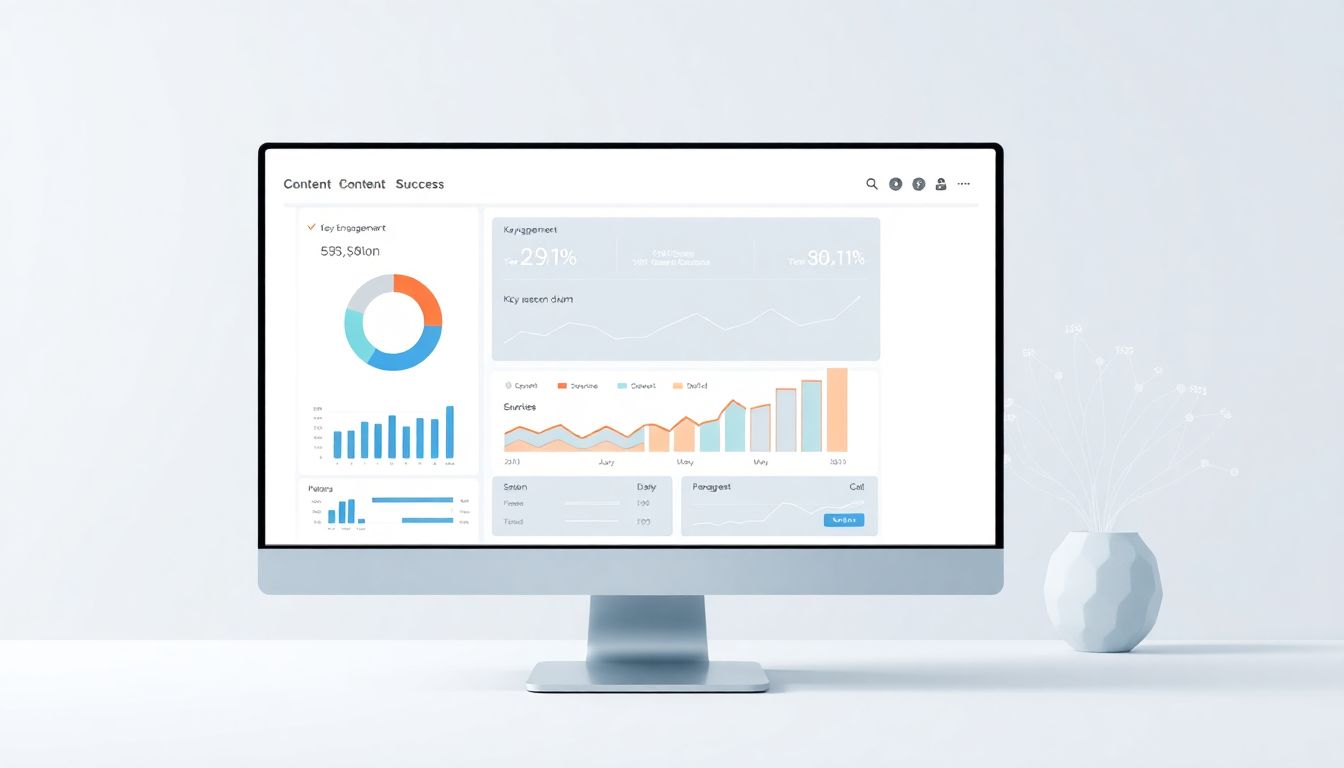I know keeping track of how readers interact with your content can feel overwhelming. It’s easy to wonder if you’re connecting or just guessing what works. But don’t worry—there’s a way to see what’s really happening behind the scenes.
If you keep reading, I’ll show you simple ways to analyze engagement and make smarter choices. From tracking key metrics to acting on real-time feedback, you’ll learn how to turn data into better content and grow your audience.
Here’s a quick look at what’s coming: ways to understand your readers, improve experiences, target the right groups, measure success, and tie it all back to your business goals. Ready to get started?
Key Takeaways
Key Takeaways
- Track important metrics like session duration, bounce rate, and views to see how readers engage. Use tools like Google Analytics to spot patterns and identify content that works or needs improvement.
- Use the data to make content more engaging by adding visuals, videos, or interactive elements. Review your analytics regularly to test what influences reader behavior and adjust accordingly.
- Group your audience based on their behavior and interests. Targeted content for specific segments can boost engagement and foster loyalty.
- Measure success with indicators such as time spent on page and interaction rates. Compare your numbers to industry benchmarks to refine your strategy.
- Encourage feedback through comments and quick polls. Use real-time data to see what works and make quick changes to keep your content fresh.
- Connect engagement data to your business goals by tracking conversions like newsletter sign-ups or sales. Use this insight to improve your content’s impact on growth.

1. Track Key Engagement Metrics to Understand Your Readers
Knowing what your readers actually do on your site or content is the first step to understanding them. Metrics like average session duration, bounce rate, views per user, and time spent on each article show how engaged readers are. For example, if most readers spend less than a minute on an article, it might mean the content isn’t hitting the mark. Interestingly, 87% of an article’s readers check out within the first 72 hours, especially with trending topics, so focusing on early engagement is crucial. Set up tools like Google Analytics 4 to monitor these metrics consistently and spot patterns. Tracking syndicated content is particularly helpful, as it pulls in 41.8% more readers than original pieces. Use this data to identify which topics, formats, or headlines attract the most attention. Quickly noticing a page with high bounce rates is a red flag — it’s time to tweak your headlines or improve the content immediately.
2. Use Analytics Data to Improve Content and User Experience
Once you know how readers behave, the next step is to make your content better based on that info. If data shows people leave a page quickly, consider adding more engaging elements like images, videos, or interactive features. For instance, tracking where readers click or scroll helps pinpoint exactly what keeps them hooked or where they lose interest. Platforms like Google Analytics can even tell you how visitors arrive — whether from social media, search, or direct visits — so you can adjust your promotion strategies accordingly. A simple tip: review your engagement weekly to see what’s working or not, and test small changes to see if they improve reader time and interaction. Remember, digital magazines or news sites that track page views, time per page, and interactive clicks gain clear insights into what content resonates most, helping you tailor future pieces.
3. Segment Your Audience for Better Targeting and Personalization
Not all readers are the same, so grouping your audience into segments is a game changer. Using engagement data, you can categorize visitors by demographics, behaviors, or interests, allowing you to send more personalized content. For example, if analytics show a segment of readers consistently clicks on tips for beginners, you can create content specifically for that group. By identifying which segments engage more deeply — like those who spend an average of five minutes on a page or click multiple links — you can prioritize topics that truly matter to your audience. To get started, set up audience segmentation in your analytics platform and review which groups show high engagement rates. This way, you can craft targeted emails, recommendations, or content that feels more relevant, increasing loyalty and time spent on your site. Remember, a heavily engaged segment is often the easiest to convert into loyal subscribers or customers over time.

4. Measure the Success of Your Content with Key Engagement Indicators
To see if your content is truly hitting the mark, you have to pay attention to specific engagement indicators like average session duration, bounce rate, and pages per session.
Remember, an increase in average engagement time suggests that readers are finding your content valuable enough to stay longer.
For example, if your bounce rate is high, it might mean your headline or opening needs tweaking or perhaps the content doesn’t match what visitors expect.
Keeping track of how many readers click on embedded links or interact with media gives you clues about what types of content truly resonate.
As of January 2025, different industries have varying benchmarks for engagement rates, so compare your numbers to those relevant to your niche for a better picture.
Use tools like AutoCrit or proofreading software to analyze your content’s effectiveness and identify areas for improvement.
Set goals based on these metrics and review your data weekly to see what’s working and what’s not, then adapt accordingly.
5. Act on Real-Time Feedback for Continuous Content Improvements
Listening to your audience as they engage with your content is key to ongoing improvement.
Encourage comments, surveys, or quick polls—tools like live feedback widgets can make this process easy.
When readers share frustrations or praise specific sections, use that information to revise and create better content down the line.
In addition to comments, keep an eye on real-time analytics—seeing spike or drop in engagement at certain moments can tell you a lot about what works.
For instance, if a particular headline consistently gets more clicks or your new interactive feature gets more engagement, prioritize similar approaches in future posts.
Incorporate small tests, such as changing headlines or adding images, and observe how your audience responds—these quick wins can lead to big gains over time.
Don’t be afraid to drop what’s not working; adjusting content based on immediate feedback keeps your site fresh and engaging.
6. Connect Engagement Data to Business Results and Growth
While engagement metrics are great, understanding how they translate into business success is what really matters.
For example, a spike in time spent and interactions might lead to more newsletter sign-ups or product sales.
Track conversions from your metrics—if increased page views and longer sessions correlate with higher inquiries or purchases, you know your strategy works.
In a nutshell, linking content engagement to your overall goals helps you prioritize what really moves the needle.
Set up goals in your analytics platform to see how many readers convert into subscribers or buyers, and optimize those paths.
Data from syndicated content shows it generates 41.8% higher readership, which can lead to broader brand exposure and revenue if leveraged correctly.
By consistently analyzing these connections, you can refine your content plan and fuel growth—be it more sales, leads, or loyal followers.
FAQs
Tracking engagement metrics helps you understand how readers interact with your content. It reveals what resonates best, allowing you to tailor your strategies to increase audience interest and retention.
Analytics data shows which content performs best and where visitors drop off. Use these insights to refine your topics, improve readability, and create more engaging content that keeps readers interested.
Audience segmentation divides your readers into groups based on shared interests or behaviors. It helps you deliver targeted content, improve personalization, and connect more effectively with each segment.
Success is measured using key engagement indicators such as time spent on page, click-through rates, social shares, and comments. These metrics show how well your content resonates with your audience.
